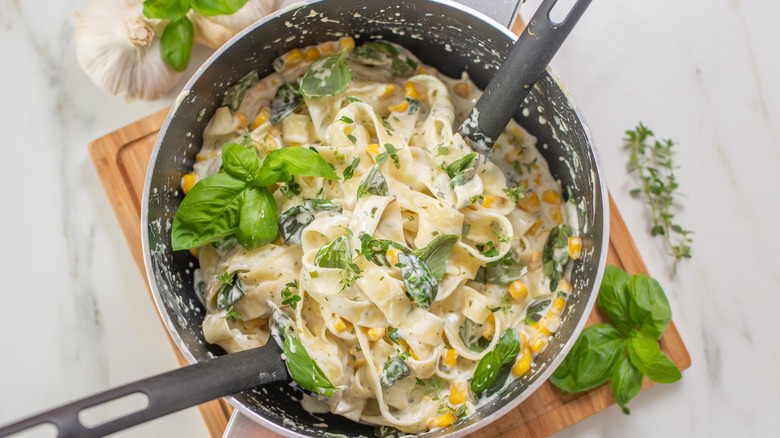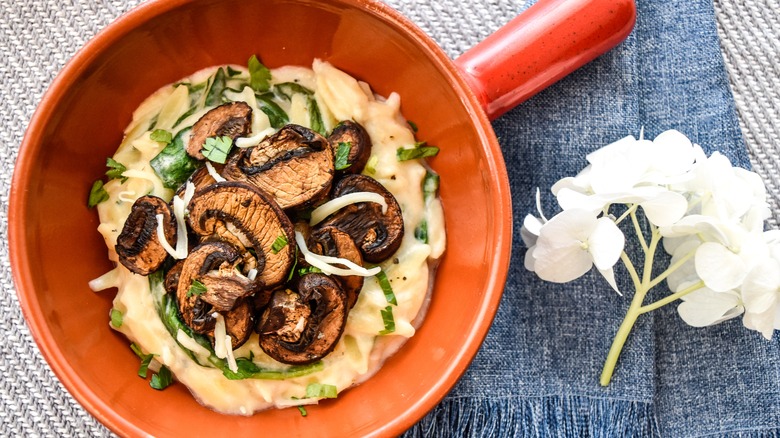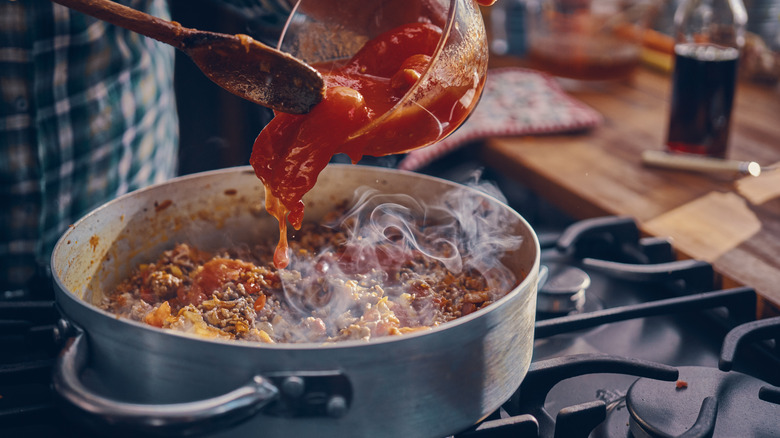Skip The Water And Boil Pasta Right In The Sauce
A bowl of pasta is arguably one of the easiest things you can make for dinner, which is why it's such a staple in American home cooking. Boil pasta, add sauce, and presto! (Don't think we've forgotten the implied third step, which is to use a ludicrous amount of parmesan cheese or pecorino romano.)
But what if it could be even easier? While you may assume that the only way to cook dried pasta is to boil it in a large pot of salted water, you can actually cook pasta directly in your sauce of choice, under the right circumstances. One-pot pasta dishes are the king of time-savers, getting your dinner on the table in no time, and with very little mess. After all, who wants to clean out that extra pot? All you need is the right type of pasta, a proper piece of cookware, and a suitable recipe — no boiling water needed.
Which pastas can you cook in sauce?
The best types of pasta to boil directly in sauce are small, quick-cooking shapes. While angel hair might be the fastest-cooking pasta when added to water, its length makes it unwieldy and difficult to cook evenly in a sauce. You would need a pan large enough for all of the angel hair to sit flat on the bottom without the ends sticking up, or else it will cook faster in the middle, where it is completely submerged, compared to the ends, which may come out dry and brittle.
Orzo, pastina, ditalini, and orecchiette are all great for boiling in sauce, since you can easily push these bite-size noodles down into the sauce and stir them frequently to ensure full submersion and even cooking. In fact, orzo is commonly cooked in sauce in orzo "risotto" recipes, as a faster alternative to risotto with rice. If you want to really make sure that your pasta cooks evenly, you can pre-soak in water it for an hour, after which it should cook in as little as one minute.
One-pot pasta recipe ideas
When making one-pot pasta dishes, you can use a large pan to boil the pasta and sauce, but a deep pot like a Dutch oven with high sides is usually a safer bet to keep your cookware from overflowing. This style of cooking works best with a smooth sauce, but if you are working with a sauce that has meat or other chunky ingredients in it, you'll just want to make sure to add enough water so that your pasta is fully submerged. Much of the water will evaporate or be absorbed into the pasta, so you don't need to worry about watering down the flavor of your sauce.
You could employ this technique with a tomato sauce; a cream-based sauce; or a simple sauce of garlic, olive oil, white wine, and herbs. Once your liquid has reached a boil, add your pasta and reduce the heat. The noodles may take a bit longer to cook than they would in boiling water, since the sauce will likely be at a lower temperature than that, but before you know it, your pasta will be cooked, and soaking in the sauce the whole time will make it even more flavorful and delicious.



